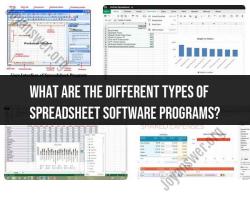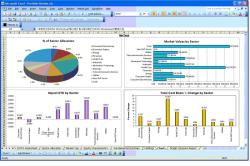What are the different types of power outlets?
Power outlets, also known as electrical receptacles, come in various types and configurations around the world. The differences in types are primarily due to variations in voltage, frequency, and plug shapes. Here are some of the most common types of power outlets:
Type A:
- Description: Type A outlets have two flat parallel pins.
- Regions: Common in North and Central America, the Caribbean, and parts of Asia.
Type B:
- Description: Type B outlets have two flat parallel pins and a grounding pin.
- Regions: Common in North and Central America, the Caribbean, and parts of Asia.
Type C:
- Description: Type C outlets have two round pins.
- Regions: Common in Europe, Asia, Africa, and South America.
Type D:
- Description: Type D outlets have three round pins in a triangular pattern.
- Regions: Used in some parts of Africa, Asia, and the Middle East.
Type E:
- Description: Type E outlets have two round pins and a grounding pin.
- Regions: Common in Europe, particularly in France, Belgium, Poland, and the Czech Republic.
Type F:
- Description: Type F outlets have two round pins and a grounding pin.
- Regions: Common in Europe, including Germany, Austria, the Netherlands, and Spain.
Type G:
- Description: Type G outlets have three rectangular pins in a triangular pattern.
- Regions: Common in the United Kingdom, Ireland, Africa, Asia, and the Middle East.
Type H:
- Description: Type H outlets have three round pins in a linear configuration.
- Regions: Used in Israel and the West Bank.
Type I:
- Description: Type I outlets have two flat pins in an inverted V-shape and a grounding pin.
- Regions: Common in Australia, New Zealand, China, and parts of the Pacific.
Type J:
- Description: Type J outlets have three round pins in a linear configuration.
- Regions: Common in Switzerland and Liechtenstein.
Type K:
- Description: Type K outlets have three round pins in a triangular pattern.
- Regions: Used in Denmark and Greenland.
Type L:
- Description: Type L outlets have two round pins and a grounding pin.
- Regions: Used in Italy and parts of Chile.
Type M:
- Description: Type M outlets have three round pins in a triangular pattern.
- Regions: Common in South Africa and some parts of Asia.
Type N:
- Description: Type N outlets have two round pins and a grounding pin.
- Regions: Used in Brazil and South Africa.
It's important to note that the voltage, frequency, and plug shapes can vary even within regions, so travelers should be aware of the specific electrical standards of the country they are visiting. Additionally, some countries may have multiple types of outlets in use. Adapters or voltage converters may be necessary when using electronic devices in different regions.
Categorizing Power Outlets Based on Voltage and Current Capacity
Power outlets are categorized based on their voltage and current capacity, ensuring they can safely handle the electrical demands of connected devices and prevent electrical hazards.
Voltage
Voltage, measured in volts (V), is the electrical pressure that drives current through a conductor. Power outlets are categorized based on the voltage they supply:
• Low-voltage outlets: These outlets typically operate at 12 to 48 volts, commonly used for low-power devices like laptops, smartphones, and portable electronics.
• Medium-voltage outlets: These outlets typically operate at 120 to 240 volts, used for household appliances and general-purpose electronics.
• High-voltage outlets: These outlets typically operate at 480 to 600 volts, used for industrial equipment and high-power machinery.
Current Capacity
Current, measured in amperes (A), is the rate of flow of electrical charge through a conductor. Power outlets are rated for a specific maximum current capacity, ensuring that they can safely handle the current demand of the connected devices.
• Low-current outlets: These outlets are typically rated for 10 to 15 amps, suitable for low-power devices like lamps, televisions, and small appliances.
• Medium-current outlets: These outlets are typically rated for 20 to 30 amps, suitable for household appliances like refrigerators, ovens, and washing machines.
• High-current outlets: These outlets are typically rated for 40 to 60 amps, used for industrial equipment and high-power appliances.
Recognizing Common Power Outlet Configurations and Applications
Power outlets come in various configurations, each designed for specific applications and voltage/current requirements. Some common outlet configurations include:
• NEMA 1-15: This is a standard 15-amp, 120-volt outlet commonly found in homes and offices. It has two flat parallel prongs and one round grounding prong.
• NEMA 5-15: This is a standard 15-amp, 125-volt outlet commonly used for household appliances and electronics. It has three flat prongs, one wider than the others, and a grounding prong.
• NEMA 5-20: This is a standard 20-amp, 125-volt outlet commonly used for appliances that require higher current, such as refrigerators and microwaves. It has three flat prongs, one wider than the others, and a grounding prong.
• NEMA L6-30: This is a 30-amp, 240-volt outlet commonly used for larger appliances like electric stoves and dryers. It has four flat prongs, two wider than the others, and a grounding prong.
• NEMA 14-50: This is a 50-amp, 240-volt outlet commonly used for electric ranges, welding machines, and other high-power equipment. It has four flat prongs, two wider than the others, and a grounding prong.
Ensuring Electrical Safety and Compatibility with Power Outlets
Electrical safety is paramount when using power outlets. Here are some essential guidelines:
• Match appliance requirements to outlet specifications: Always use the correct outlet for the appliance, considering its voltage and current demands.
• Avoid outlet overloading: Don't overload outlets with multiple appliances, as this can exceed the outlet's current rating and pose a fire hazard.
• Regularly inspect outlets: Check outlets for signs of damage, such as frayed wires, loose connections, or cracked or discolored covers. Replace damaged outlets promptly.
• Utilize protective devices: Install ground fault circuit interrupters (GFCIs) in areas with potential moisture exposure, such as bathrooms and kitchens. GFCIs can prevent electrical shock hazards.
• Seek professional assistance: For any electrical work or concerns, consult a qualified electrician to ensure safety and compliance with electrical codes.













